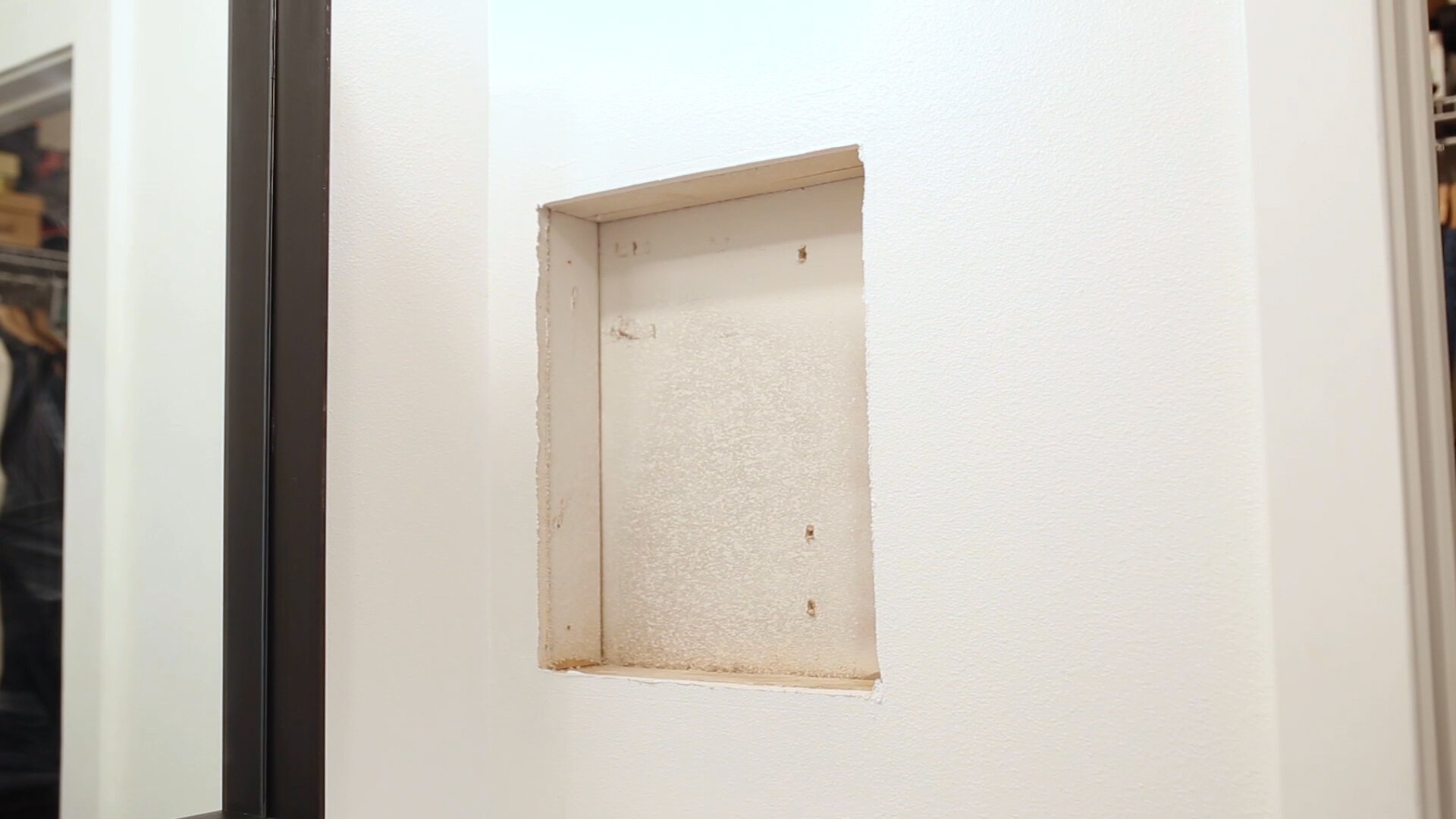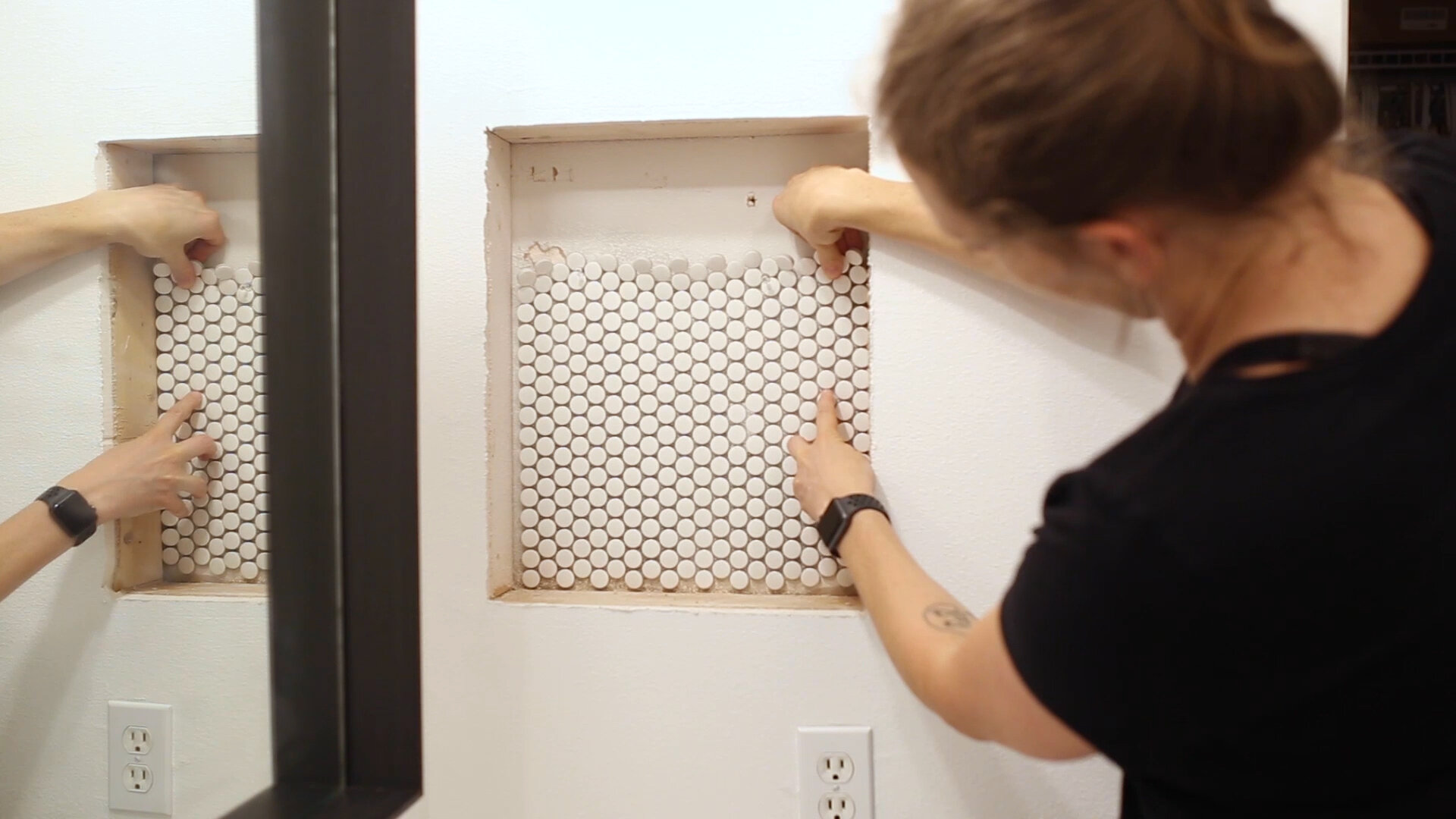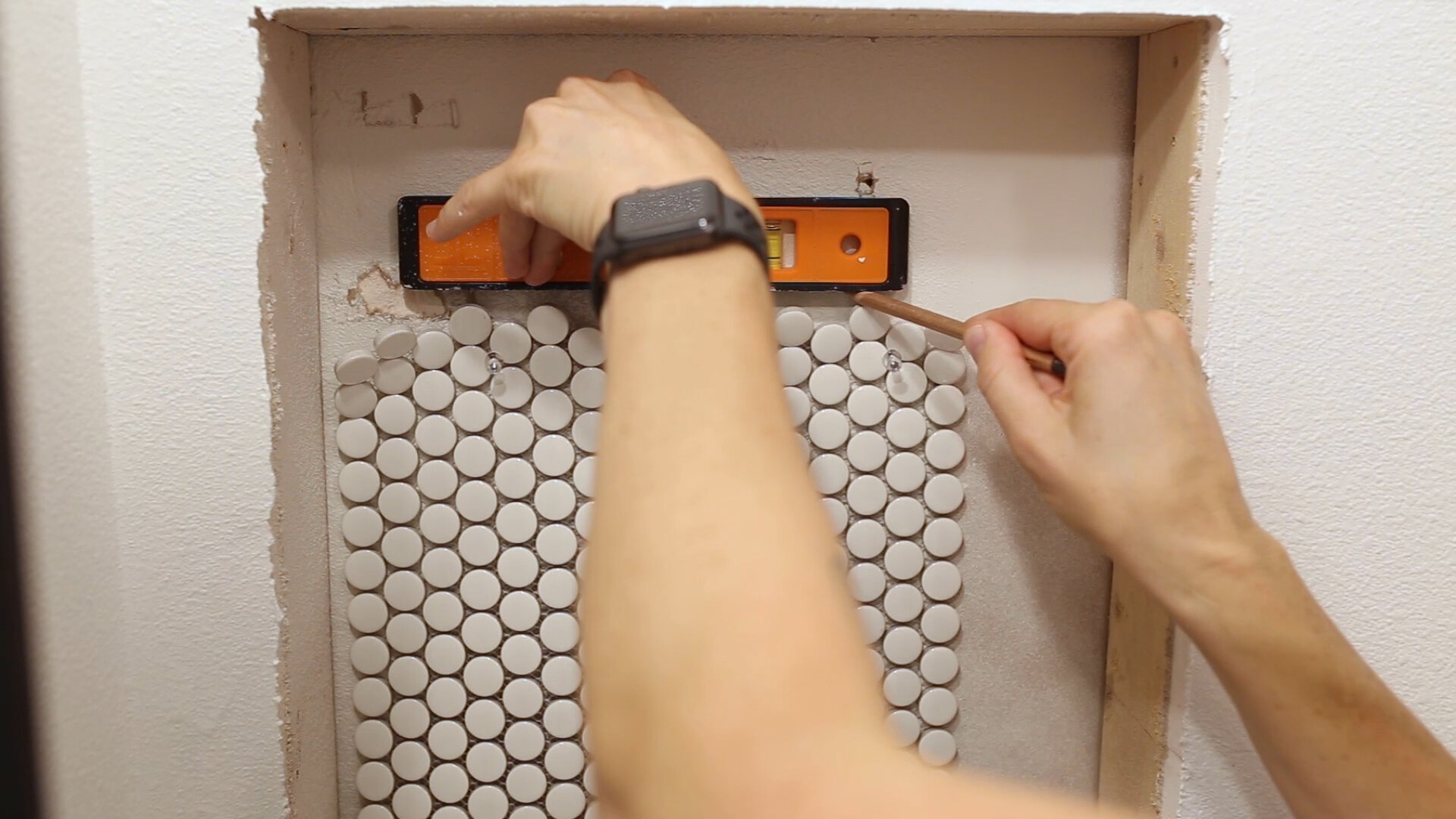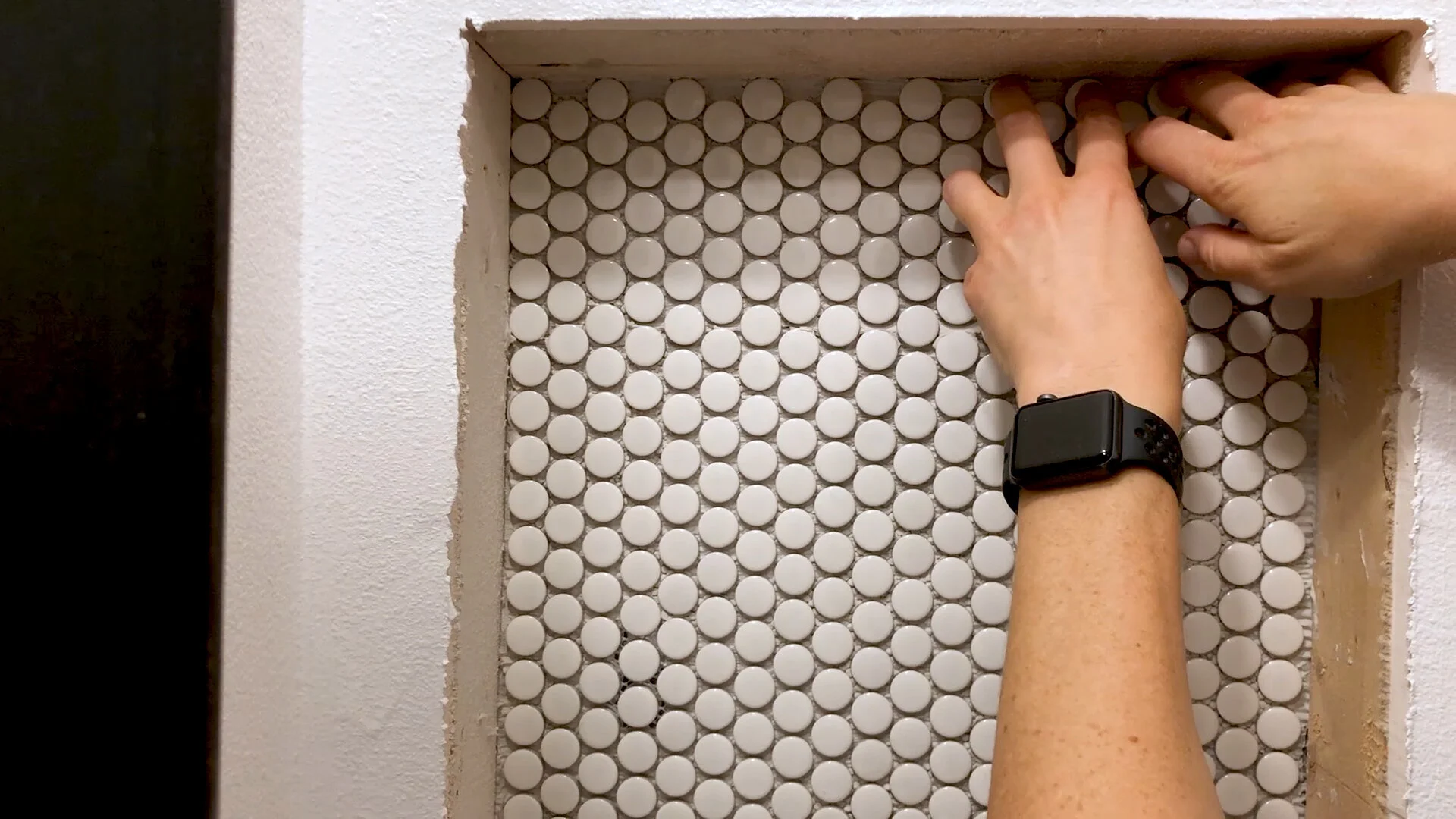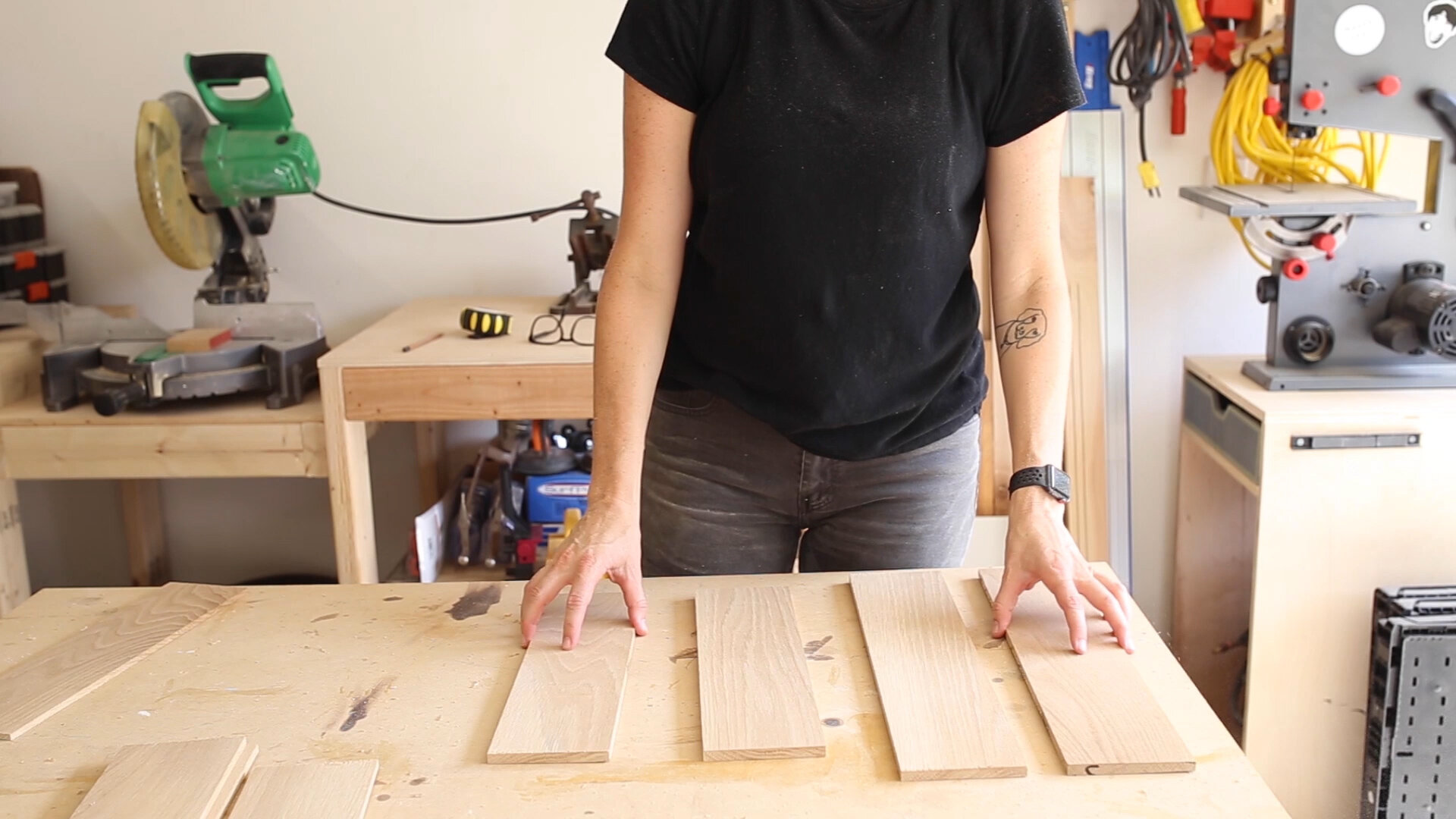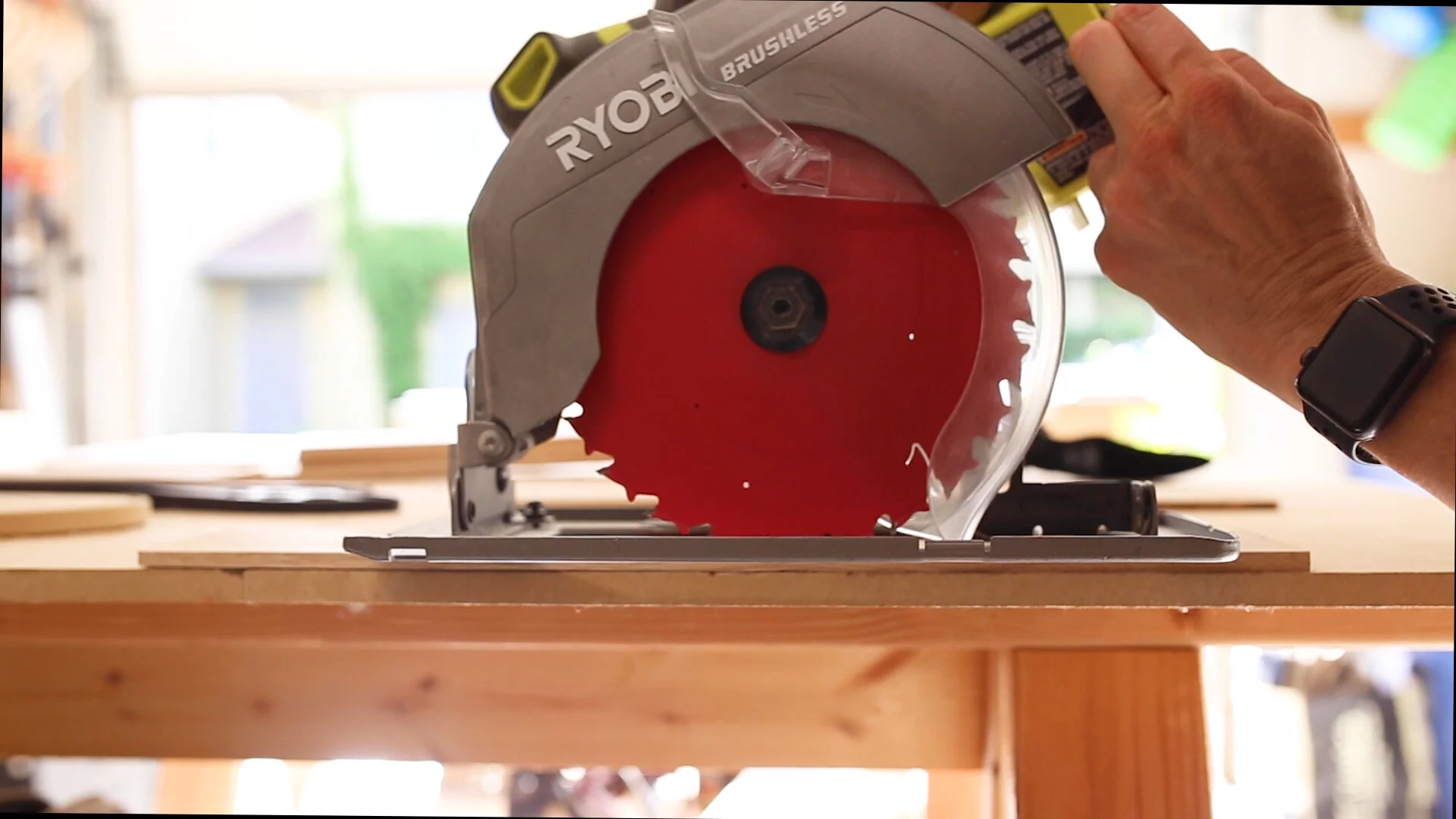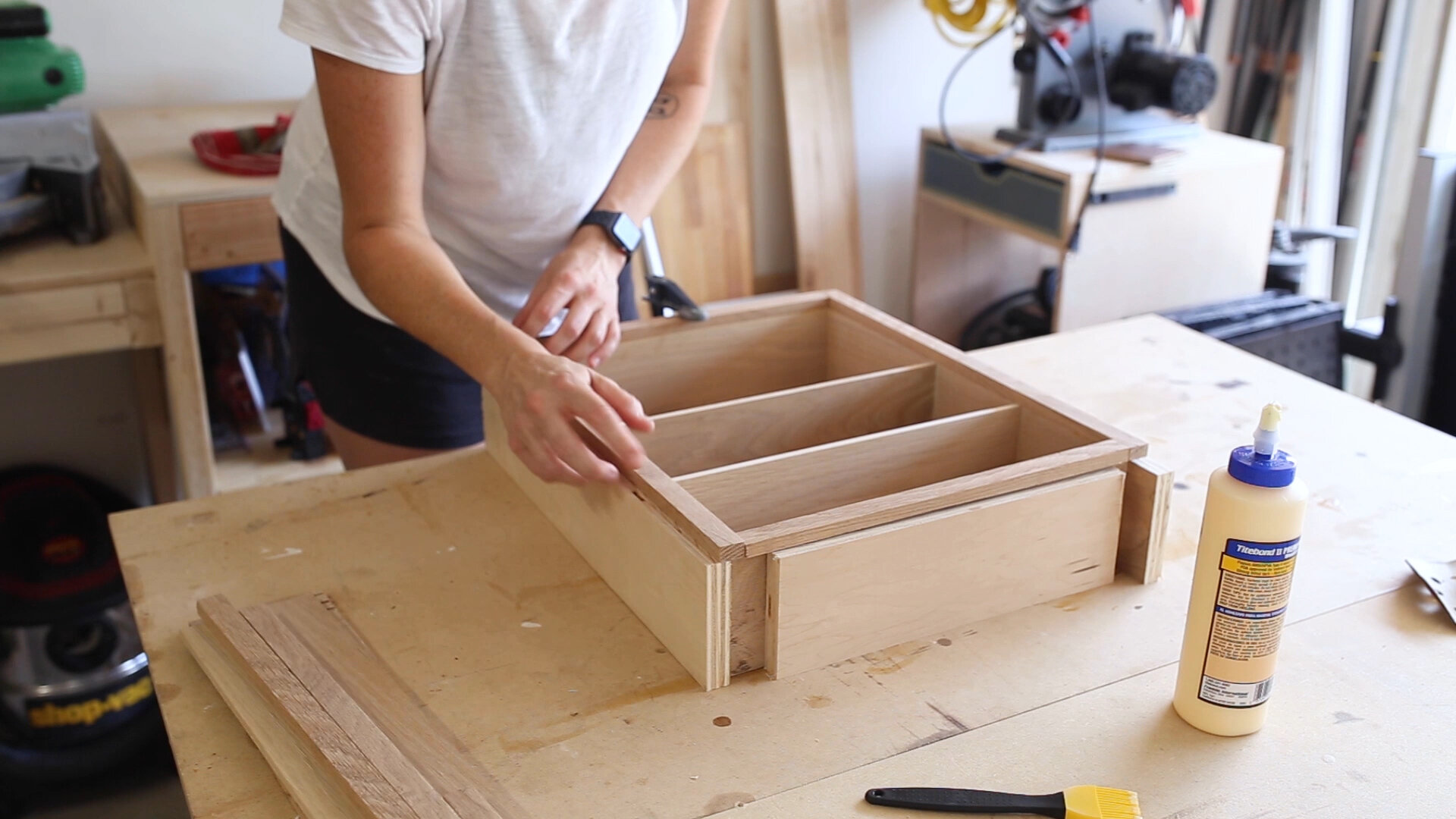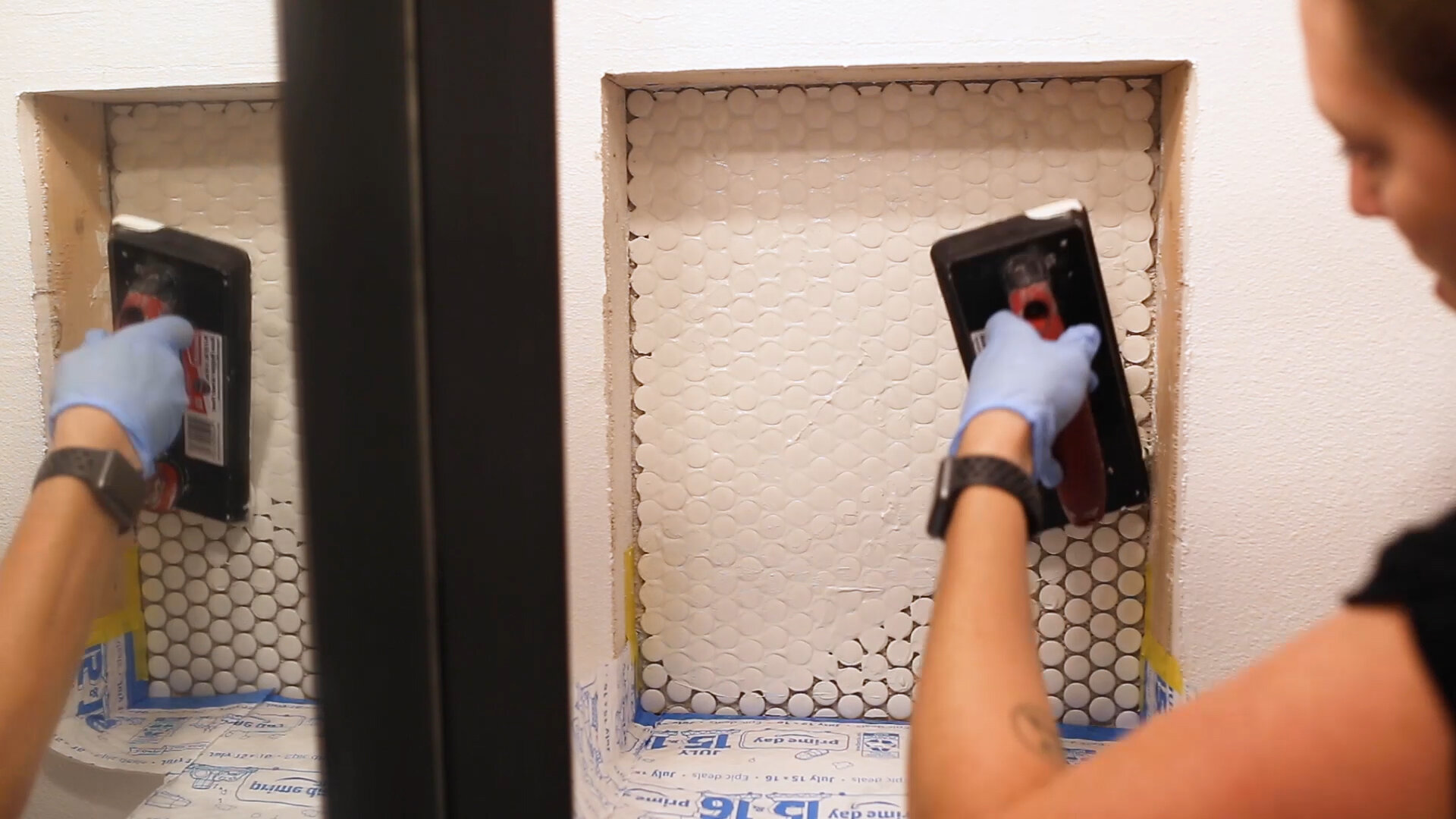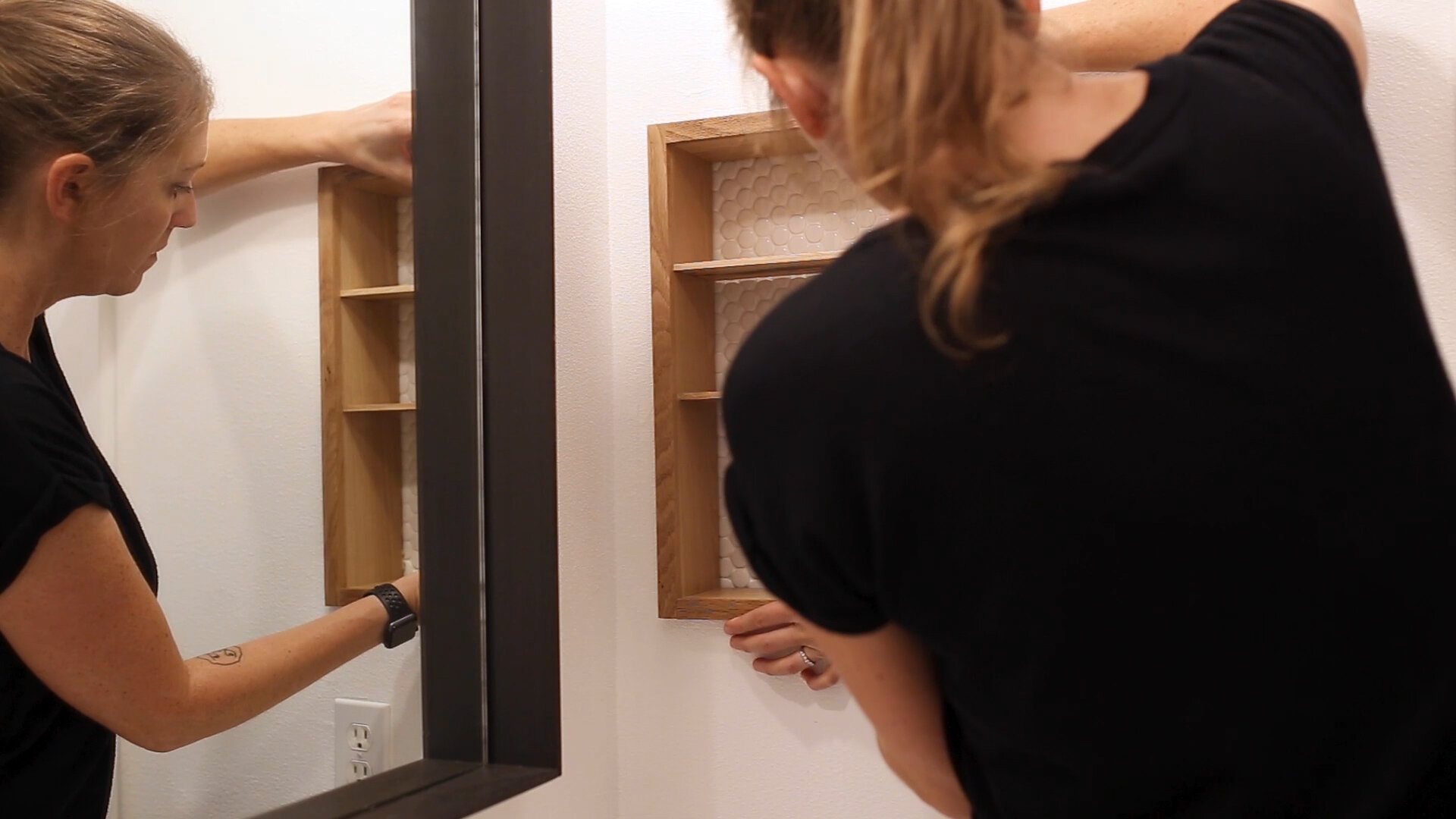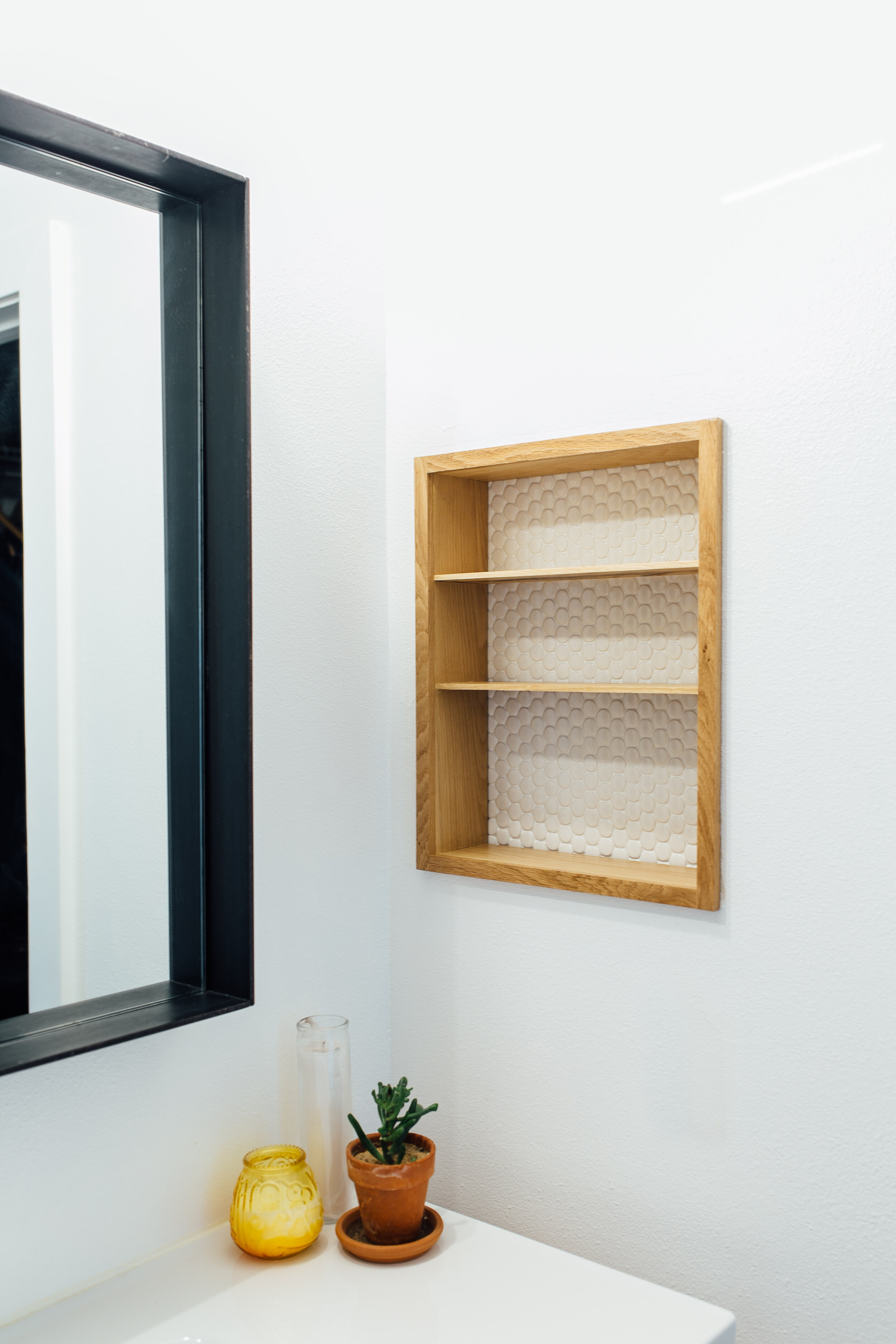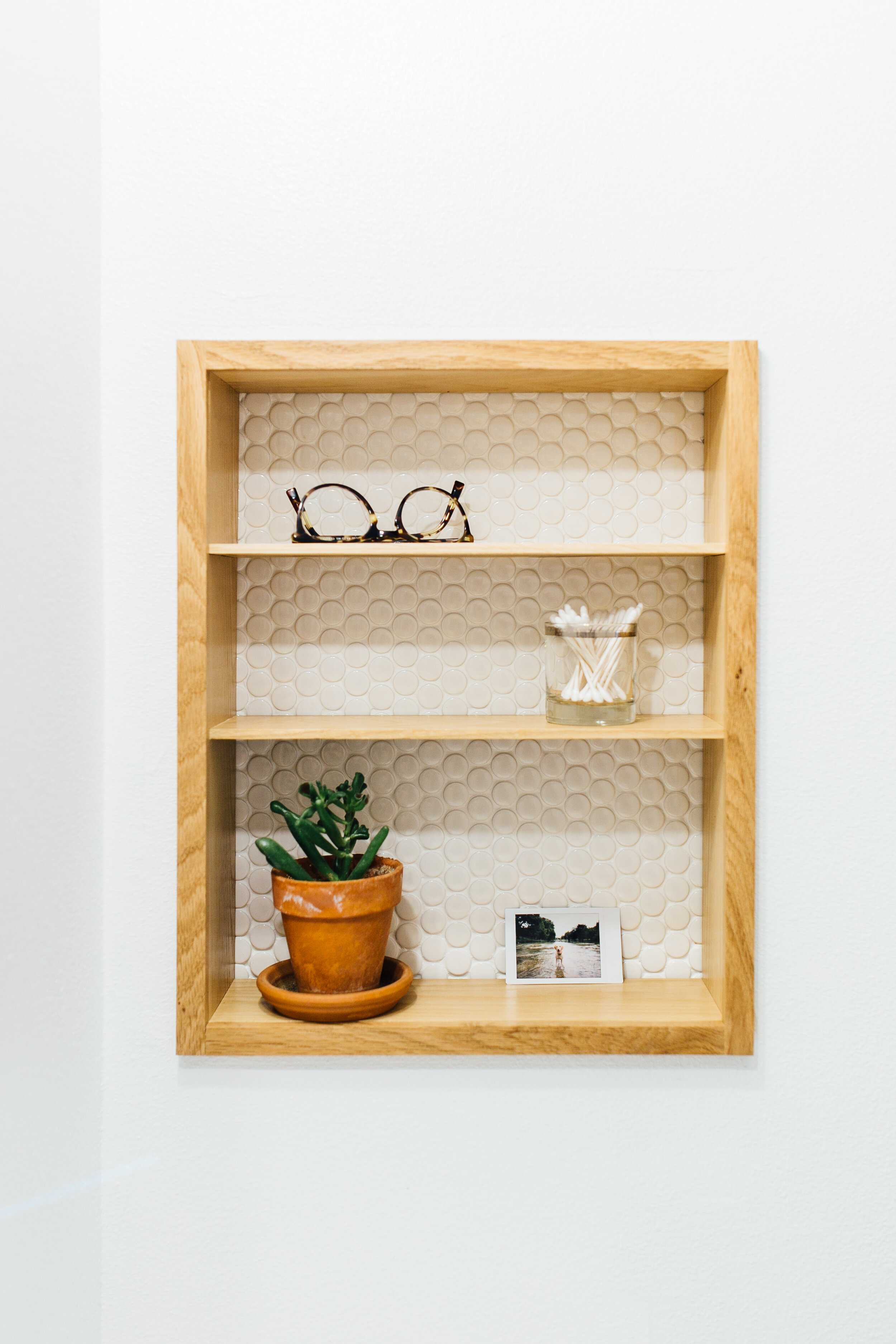DIY Modern Medicine Cabinet Makeover
I took out a yellowing, plastic, builder-basic medicine cabinet and made over the space with custom, modern built-in shelves. This video is a tutorial of how I took solid white oak boards and white penny tile and turned them into an awesome DIY built in.
Check out the video above or read below to see how I did it.
Materials and Tools I Used:
Penny tile: https://thd.co/31vGAqH
Small level: https://amzn.to/2Bvim4Y
Tile Adhesive: https://amzn.to/31yasCy
V Notched Trowel: https://amzn.to/2pxqUWC
Rubber Grout Float: https://amzn.to/2BtV9Ap
Table Saw: https://amzn.to/31rOQI1
Miter Saw: https://amzn.to/2pxpyeu
Push Stick: http://bit.ly/2nCC5MN
Circular Saw: https://amzn.to/2WSrF7Q
Orbital Sander: https://amzn.to/2uWHM8A
Wood Glue: https://amzn.to/2D8lqFx
Wood Finish: https://amzn.to/2P0goQc
Tile Grout: https://amzn.to/33OpSUG
Construction Adhesive: https://amzn.to/32vJ5ur
Pin Nailer: https://amzn.to/2p0AYHs
When I took out the basic plastic cabinet I was left with a framed out hole in the wall.
Instead of making a completely wooden cabinet to fill this cavity, I decide to use two different materials and tile the back side with this clean white penny tile.
I started by pulling off any loose sheetrock pieces to make sure I had a flat back wall surface to work on.
These small tiles come in square sheets held together with a mesh back. I first pinned up a whole sheet to help me get an idea of how much space was left around it. And then I cut out sections from additional sheets to fill in the sides. Which was super easy to cut with just a pair of scissors.
I used a small level, held at the top of the full sheet of tile and drew a level horizontal line. This will help me place the tile straight.
To adhere the tile, Im using a premixed, ready to use tile adhesive and a 3/16th V notch trowel. The small trowel is what is recommend for these tiny tiles.
With the flat side of the trowel, I applied a layer of the adhesive to the wall. And then I came back with the notched side and troweled in the grooves.
I didn’t apply the adhesive thick enough in a few spots so to fix that I just added more until I could trowel in nice grooves. I also kept my adhesive just under the level line so I could still see it for reference. And I set the two bottom pieces of tile in place.
With the bottom done, and level, I could then repeat the process for the top pieces.
When all of the pieces were in place, I took a rubber grout float and gently pushed on on the tiles to make sure there were no lumps and everything was flush. And then left that to dry.
I’m going to be building my frame out of 3/4” solid white oak. To start the wooden frame, I took my board to my table saw and cut it down to 4” wide.
Then I cut four smaller pieces from that one board on my miter saw. You could also use a circular saw.
I wanted my frame to be thinner than 3/4” so to change the thickness, I utilized a technique called resawing. This allows you to get thinner pieces out of one thicker piece of wood. It’s often done on a bandsaw but my bandsaw is too small to handle this size. So an alternative is to resew on the table saw.
My boards are 4” in height. So I raised my blade height to be just past 2” and set my fence to the width I wanted. And then I very carefully and slowly pushed the wood through, utilizing two push sticks.
After the first cut, I then flipped the wood end for end, making sure the wood’s face stays agains the fence so that the cuts line up directly above and below each other. It’s super important to utilize your table saw’s riving knife so the two separate pieces keep from joining together and binding the blade as the cut is finished.
After resewing my boards, you can now see that I’m left with several thinner boards that I’ll now make my frame and shelves out of.
I set my boards in place and marked on my side pieces where I’ll want my shelves to be. I then used a square and continued my lines across the boards. These lines are where I am going to cut grooves, called dados, where the shelves are going to slide in.
To cut the grooves I’m going to use my circular saw. And here you can see me adjusting the depth of my cut and then locking it into place.
To make the cuts I used a straight edge to establish the outside lines and then multiple passes to remove the meat in the middle.
And you can see the dados I’m going for here.
After testing the shelves in the dados, they were slightly tight so I widened them just a bit with another pass and then they fit perfect.
I then held the two sides together and used the existing grooves to exactly transfer the lines to the opposite side support.
And then repeated the circular saw passes for the second side.
I then cleaned up the grooves with a few passes with a small, sharp chisel. And then I gave all of my pieces a good sanding.
To put the frame together, I’m just going to be using wood glue and clamps because the boards are too thin to accept nails or screws. It’s probably overkill in hindsight, but to combat the glue squeeze out, I decided to add painters tape at the borders of the glued corners to make squeeze out clean up even easier.
I then added the glue to the joining corner pieces of the box and and clamped it up to dry.
Oh and the dark places that you see on the outside there - those are blade burn marks from the resewing. I never sanded them out because these faces will be hidden in the wall.
With the frame glued up and dry, I moved on to inserting the shelves. I did a quick dry fit to double check that my shelves fit. And once confirmed that they did, I laid down some glue in the grooves and slid the shelves in.
To add trim to the frame, I took another white oak board and cut some 1/2 inch strips on my table saw and miter saw. And again, if you dont have these saws, you could also do this with a circular saw.
Then, after some sanding, I got 4 scrap boards and cut them to the exact outer height of my frame. These boards are going to act as supports as I glue on the small trim pieces.
After the glue dried, the last step for the frame was to add some finish. I like to use a water based finish on light woods because it dries clear and doesn’t cause the wood to yellow at all.
Back at the tile, the last step of the build was to add grout. I mixed up a small amount of white grout until it resembled a smooth cake batter.
And then, with a rubber float, worked the grout into the seams between the tiles, holding my float at a 45 degree angle.
I let it sit for a few minutes and then I came back with a clean wet sponge and wiped away the excess, being real careful not to wipe the grout out of the joints.
After the grout dried, the last step was the instal!
I used construction adhesive specifically for wood and applied it to the 2x4’s in the wall on all sides. I then slid the frame into the cavity and then shot a few small pin nails with my nailer in the sides to secure it while the adhesive dried.
And with that, my medicine cabinet renovation was done!
I think it’s safe to say that this is a huge improvement from the yellowing plastic cabinet that was in here before. I couldn’t be more excited with how well this turned out and how custom and modern it looks.
For detailed instructions on this DIY Modern Medicine Cabinet makeover, be sure and watch the video. I'd love to see pics of yours if you decide to make your own!
If you liked this project and want to stay up to date with what I’m building, then be sure to sign up for my emailed newsletter and you’ll get an email when I post something new. See you soon!
You can find me on Instagram @makergray
(Most of the links listed above are affiliate links. As an Amazon Associate I earn from qualifying purchases. I super appreciate your support for Maker Gray in this way)

